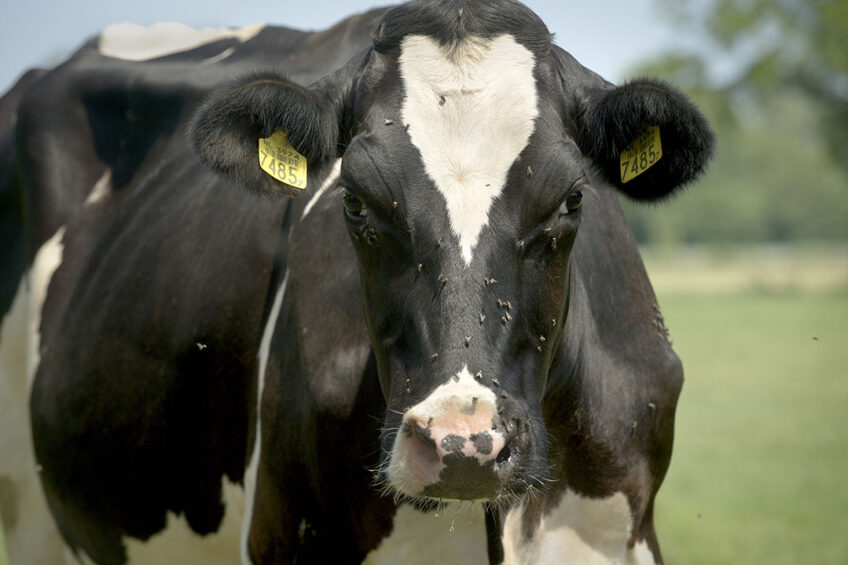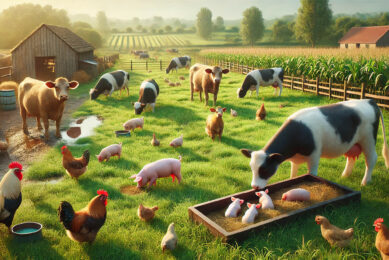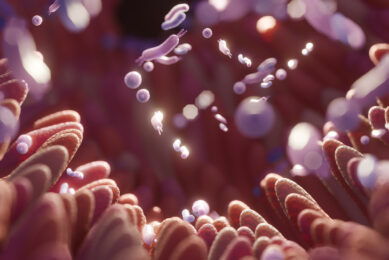Understanding the function of the ruminal microbiome

How can microbial populations in the rumen affect dairy cattle performance? Also is there a link between DNA and rumen efficiency? This article looks at research carried out on the important functions of the gut microbiome.
In dairy cows, what happens in the rumen is crucial, affecting how a cow’s efficiency in both using the nutrients in her feed and her production of nutrients involved in milking performance.
“Hence, there is growing interest within the ruminant livestock sector to understand the functionality within and among rumen microbes,” explains Dr Sabrina Greenwood at the University of Vermont and her student Mallory Honan in a recent paper in the journal Nature. “Current knowledge of the rumen microbiome is cross-disciplinary and rapidly expanding, with novel research emerging.” New analysis techniques are needed, Greenwood and Honan explain, because “despite advances in our understanding, there is still a gap in knowledge regarding the undercurrents and interplay of microbe-specific metabolic pathways because of their dynamicity, adaptability, and complexity.”
Earlier this year, a group of scientists from China and Canada revealed that several Prevotella species of bacteria were significantly more abundant in the rumen of cows producing high yields of milk protein, and that these microbes might also affect the metabolism of amino acids. The team in this case concluded that both the activities of microbes in the rumen and some cow-dependent mechanisms affect milk production quality among cows fed the same diet, and more research could lead to the development of precision feeding strategies to improve milk quality and production.

Dr Leluo Guan, one of the study authors and a professor in the faculty of Agricultural, Food and Nutritional Science at the University of Alberta, explains further. “We do know that cows fed the same diet have different rumen efficiencies related to the microbiome present in their rumens,” she says, “and so I speculate that if we can accurately determine a cow’s rumen microbiome/efficiency and say her rumen efficiency is high, we can feed her lower level of high energy diet or even lower-energy feed and she will still be a very efficient performer.”
A closer look at dietary energy
Microbe types in the rumen include bacteria, archaea, protozoa and fungi. Many factors play into the mix found in a particular cow’s rumen, such as age and health of the cow, her genetics, and most obviously, diet.
How much energy is given in the diet, as well as the type of energy, can both affect rumen microbe function. Corn is a common energy source in the dairy cow diet in some countries, and it’s therefore useful for the dairy industry to know if different corn processing methods have any effect on rumen microbes. Steam-flaking of corn is a commonly-used processing method that increases digestibility. In heifers, a group of scientists from China recently found that steam-flaked corn (when compared to finely-ground corn) promoted increased abundance of amylolytic bacteria; this in turn increases the production of propionate, a metabolite involved in energy utilisation. Overall, it was found that heifers with increased propionate concentration exhibit relatively higher average daily gain.
In another study, a group of researchers in China and the US also looked at how steam-flaked and finely-ground corn, as well amount of energy in the diet, affect rumen microbes in lactating dairy cows. Groups of study Holstein cows received treatments involving 2 levels of energy, low (LE, about 1.5 Mcal/kg) and high (HE, about 1.7 Mcal/kg), and two energy sources, GC (finely-ground corn) and SFC (steam-flaked corn) over 21 days.
Previously, these scientists had found total-tract apparent digestibility, milk yield, milk protein content and yield, and milk lactose yield all increased with higher dietary energy, and SFC increased milk yield and milk protein yield. In this study, they found that “some microbial taxa and metabolic pathways were enriched by the HE level, and they might contribute to the improved lactation performance observed previously. Furthermore, because some of the microbial genera enriched by the HE diets had exhibited increased predominance in high-producing cows, they may be used as biomarkers of one or more of the lactation traits.” Future studies, say the scientists, are warranted.
Guan notes that she and her colleagues “have so far identified the cattle DNA markers that relate to feed efficiency and rumen microbes, and we predict that cattle with those markers may have better rumen efficiency which can be used for future breeding purposes.” However, whilst rumen microbiota are therefore heritable to some degree, it’s difficult to say at this point how much a particular biomarker might contribute to the expression of specific traits related to lactation or other processes.
Guan also explains that most of the research done on the rumen microbiome draws conclusions on the relative abundance of bacterial species present in the rumen at one point in time. “However, rumen microbe populations can change even within even 24 hours,” she says. “So, the population level of a given microbe may be abundant relative to other species now, but not in a day, week or month. In addition, the changes in microbial abundance of a few species does not directly relate to metabolic functional changes. I think it’s too early to know if breeding of rumen efficiency will work in this way.”
Genetic analysis of rumen microbiome
Dr Andy Skidmorem of Lallemand’s Technical Services team shares a similar view. He points to a study where the rumen microbiome was characterised in 2 cows, the rumen contents switched and then each microbe population reverted back to its original form 1 to 60 days later. “How can the microbiome revert back so quickly after such a massive exchange of rumen contents?” he asks. “There has to be something else in the interaction between rumen contents and the host that significantly impacts the rumen microbiome.”
Overall, he’s not sure how much we can significantly influence the rumen microbiome and he believes that whilst its apparent stability may mean there’s a good opportunity to use genetic analysis of rumen microbes in dairy cow genetic selection for high rumen efficiency, it’s still very early days.
References available on request
Join 13,000+ subscribers
Subscribe to our newsletter to stay updated about all the need-to-know content in the dairy sector, two times a week.






